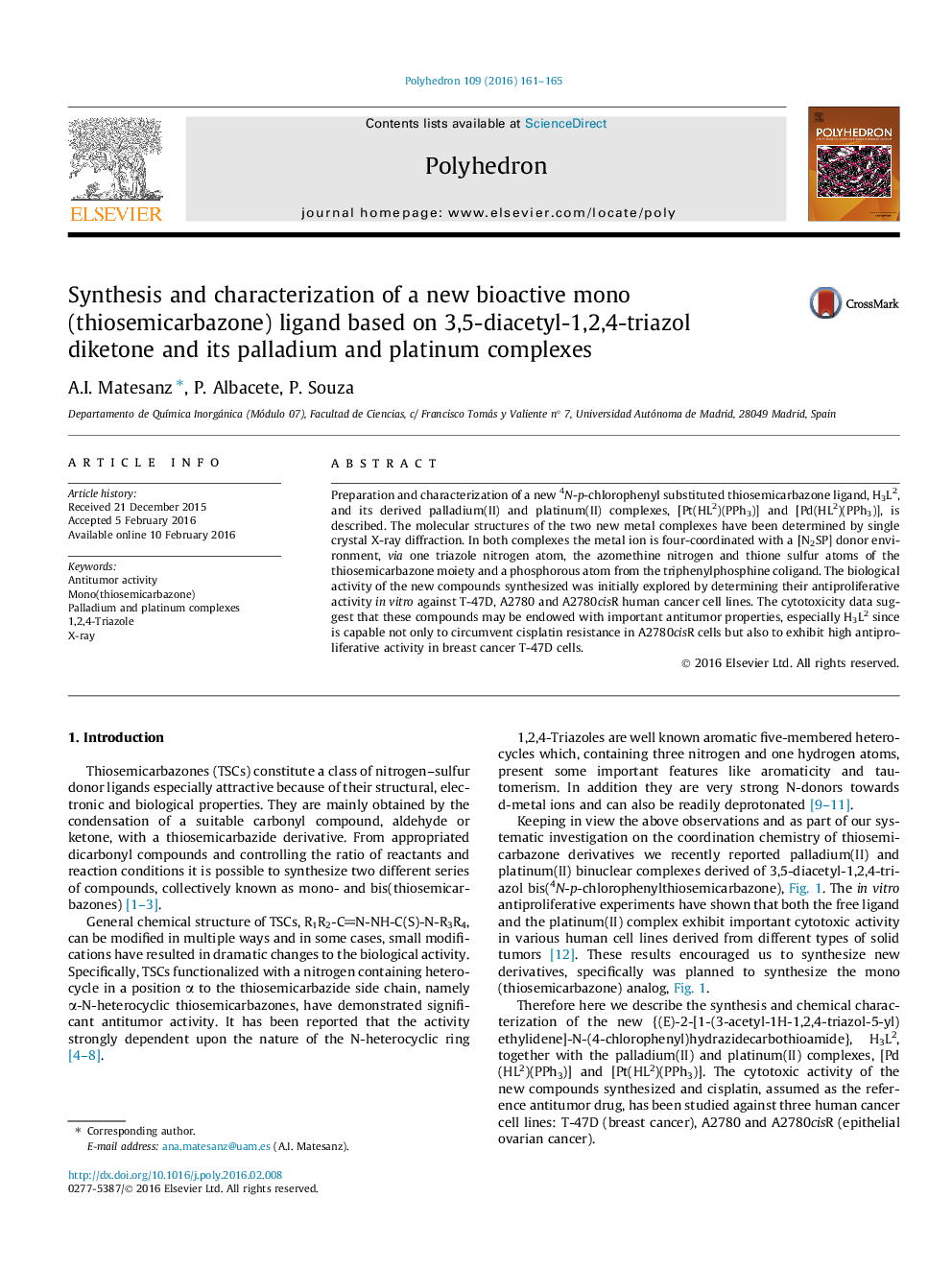| Article ID | Journal | Published Year | Pages | File Type |
|---|---|---|---|---|
| 1335141 | Polyhedron | 2016 | 5 Pages |
Preparation and characterization of a new 4N-p-chlorophenyl substituted thiosemicarbazone ligand, H3L2, and its derived palladium(II) and platinum(II) complexes, [Pt(HL2)(PPh3)] and [Pd(HL2)(PPh3)], is described. The molecular structures of the two new metal complexes have been determined by single crystal X-ray diffraction. In both complexes the metal ion is four-coordinated with a [N2SP] donor environment, via one triazole nitrogen atom, the azomethine nitrogen and thione sulfur atoms of the thiosemicarbazone moiety and a phosphorous atom from the triphenylphosphine coligand. The biological activity of the new compounds synthesized was initially explored by determining their antiproliferative activity in vitro against T-47D, A2780 and A2780cisR human cancer cell lines. The cytotoxicity data suggest that these compounds may be endowed with important antitumor properties, especially H3L2 since is capable not only to circumvent cisplatin resistance in A2780cisR cells but also to exhibit high antiproliferative activity in breast cancer T-47D cells.
Graphical abstractA new mono(thiosemicarbazone) ligand based on 3,5-diacetyl-1,2,4-triazol and its Pd(II) and Pt(II) derivatives have been synthesized and characterized. The molecular structure of both metal complexes has been elucidated by X-ray diffraction study. Cytotoxicity data suggest that these compounds may be endowed with important antitumor properties.Figure optionsDownload full-size imageDownload as PowerPoint slide
